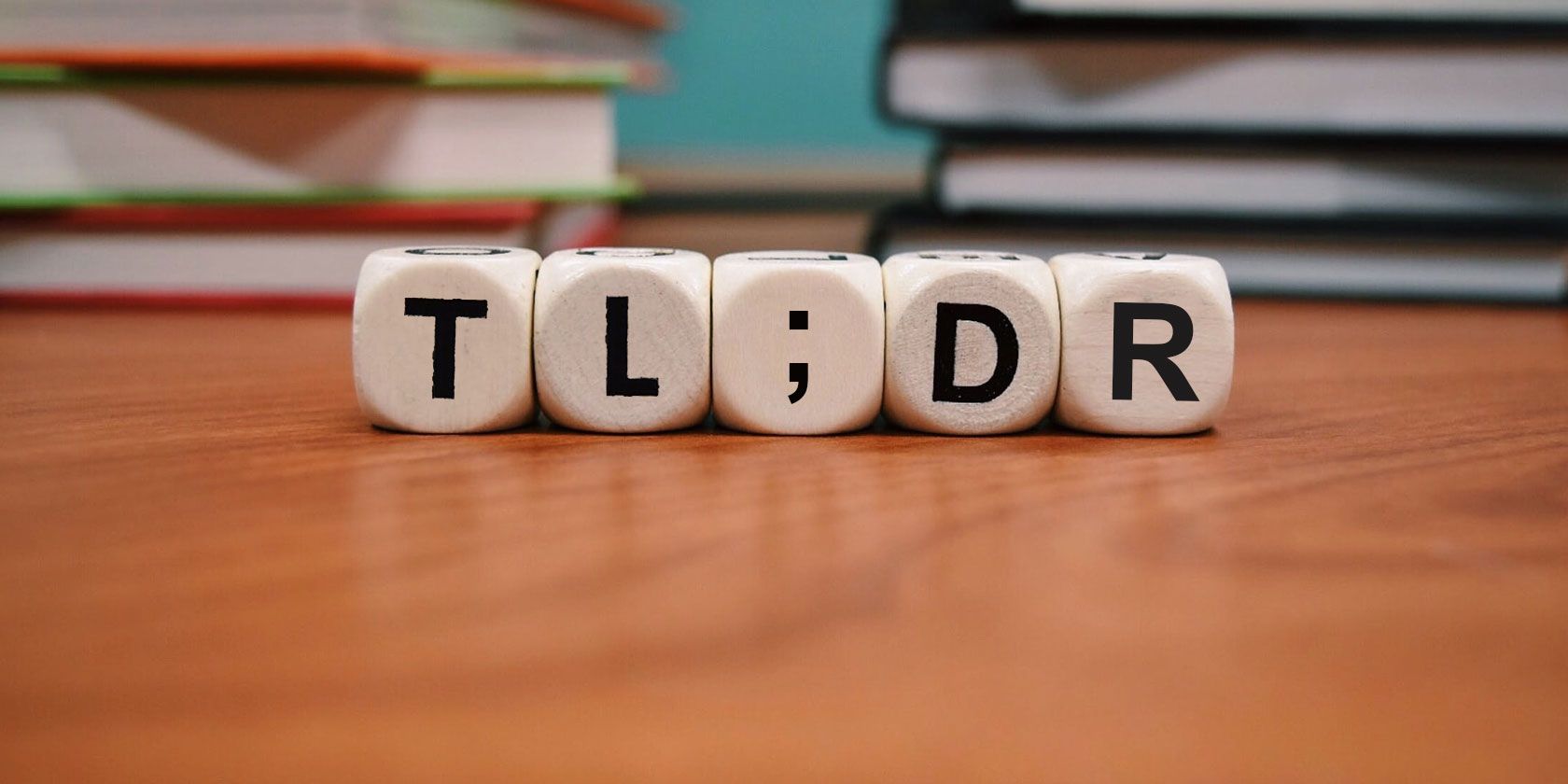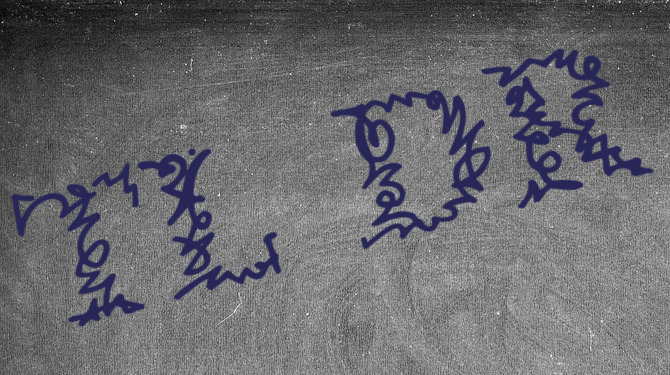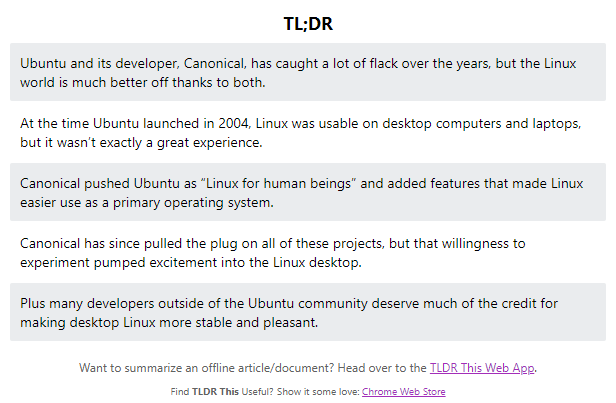Internet acronyms help you save effort by not having to type out common phrases all the time. But if you're not in the know, they end up being more confusing than anything. That's certainly the case with the TLDR acronym, as many have wondered what TLDR is.
We'll teach you everything you should know about this common abbreviation. Let's look at TLDR's meaning, how to use it, and some examples of how it works.
Definition of TLDR
TLDR stands for too long; didn't read. Many people think of TLDR as an acronym, but it's technically an initialism.
An acronym is an abbreviation made up of initials that you can pronounce, like NATO. Meanwhile, an initialism is an abbreviation where you pronounce the individual letters, such as BBC. TL;DR falls under the initialism category, so you pronounce it "tee el dee are".
Nowadays, most users write the TLDR abbreviation as simply TLDR. Its older and most proper form is TL;DR, which includes a semicolon between the L and D.
You might also see the TLDR acronym written as TL/DR or TL/DNR, which stands for did not read. These are less common, however, so most people will understand the standard TLDR just fine.
You can type the letters in uppercase or lowercase; it's not a concern either way.
TLDR: The Meaning
Now that you know what TLDR stands for, let's look at the meaning of TLDR.
TLDR by a Poster
TLDR is mainly used in internet forums, such as Reddit. If you're unfamiliar, check out our introduction to Reddit to learn more about its culture.
The primary function of TLDR is to provide a summary of a longer post that people can read instead of the entire content. A lot of the time, this is done by the original poster (OP) as a courtesy to others.
For example, someone might write up a detailed analysis of a news story, share a long personal anecdote, or otherwise post a lot of text. This might be off-putting to some people, who don't want or don't have time to read it all.
As a compromise, the poster will offer a TLDR consisting of a few lines. These concisely summarize the post for people who just want to understand the basics and move on.
Of course, you lose out on some of the finer details by only checking the TLDR. As a compromise, many people will make their TLDR clever or snarky, making them especially enjoyable for people who have the context of the full post.
Most of the time, the OP includes the TLDR summary either at the end or beginning of the post. Including it at the beginning lets people know it's there right away, so they don't click away from the post. But putting it there can also spoil the story for people who want to read it all.
Most people know to check the bottom of a post for a TLDR summary, so it's usually best to do this.
TLDR as a Comment
While TLDR often appears alongside forum posts, you can also use it as a response. Typically, people comment TL;DR to say that the original post is too long, and they didn't feel like reading it.
They might engage better with the content if you offer a summary. But people can also use this in a more sarcastic way to indicate that what you posted is too long for them to care about.
Another form of TLDR comments comes from someone who offered a summary if the OP didn't do so. People appreciate having a synopsis of content like this, so if you ever find a post intimidating and take the time to work through it, posting your own TLDR will probably go over well.
As mentioned earlier, coming up with a clever or sarcastic TLDR as a commenter is often a crowd-pleaser.
An Example of TLDR
Let's look at a real-life usage of TLDR usage from Reddit:
This is a simple example, but it illustrates the usage of TLDR. The original post isn't particularly long, though it is poorly formatted. The mass of text might put someone off from reading it all, so the TLDR line summarizes everything in a concise way.
Considerations With TLDR
You might wonder how you can use TLDR well in your own posts and avoid others requesting a TLDR in a snarky way. As we mentioned earlier, it's usually best to put the TLDR at the end of the post to avoid "spoilers" and encourage people to read all of it.
But beyond this, you should think about how you write your main post to make a TLDR less important or even unnecessary. If what you wrote doesn't really need a summary, then don't include it. Sometimes just having a TLDR can signal that you know you've written too much and it could have been shortened.
In cases where you can't avoid a large amount of text, you can still format it to make it easy to read. Break up your paragraphs so there's not too much in any of them. Use text options like bullet points or horizontal lines to make the text visually distinctive.
Like most other internet acronyms, it's wise to avoid TLDR in formal writing. It's fine to use when chatting with coworkers privately, but you probably don't want to use it in a department-wide email. Instead, stick with the more professional "In summary" or "Synopsis" if you want to offer a TLDR-like line.
Related Abbreviations and Phrases to Know
We've covered what you must know about TLDR, but there are a few related abbreviations you should also be familiar with.
One is TL;DC. This stands for too long; don't care. It's like TLDR but is more hostile. People use it to indicate that the text is simply too long for them to consider, so they're not going to read it.
TL;DW, meanwhile, stands for too long; didn't watch. This is the equivalent of TLDR for video content. You'll often see this on videos posted to Reddit. Because many people browse at work or on their phones, they might not be able to watch or hear the video. Thus, this is a way to ask for a text summary of the video content.
Finally, you should also be aware of what a wall of text means. While people overuse this term, its proper meaning is a long and rambling block of text with little to no formatting. It probably has no paragraph separation and contains loads of run-on sentences. Walls of text are difficult to read and parse.
A wall of text does not (or should not) simply mean a long post. There's nothing wrong with a lot of well-formatted text that isn't overly wordy. Don't worry about people who don't have the attention span to read it.
TLDR Browser Extensions
As a representation of how TLDR has become established in culture, you'll find several TLDR browser extensions. These allow you to get a summary version of any page you read online. Several of them are outdated, and none are wildly popular, but they're worth a look if you love summaries.
TLDR This is the most updated version, available for Chrome and Firefox. It scans an article and provides a summary of five sentences or under. If it doesn't work for you, Chrome has other options, such as TL;DR. However, they haven't seen updates in years.
Download: TLDR This for Chrome | Firefox (Free)
Download: TL;DR for Chrome (Free)
Use TLDR Wisely
To summarize, TLDR lets you provide a small summary of a post online or request one from the original poster. If you write up something wordy, consider whether it needs a TLDR. It's not appropriate in every instance, but it's often appreciated in today's online world with short attention spans.
TLDR is far from the only acronym you should know. Take a look at our list of internet slang and abbreviations to study up on more, like what TBH means.




